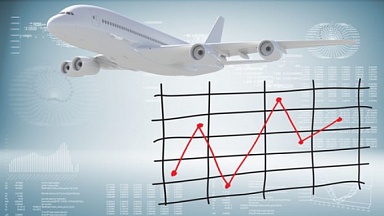Prices for one-way air freight charter flights have soared to as much as US$1.5 million, as capacity becomes ever tighter and competition for peak-season space mounts, with warnings that it will be hard to even find a widebody freighter aircraft available for charter between now and the beginning of December.
The air cargo capacity squeeze on major trade lanes from Asia to the US and Europe has become even tighter in recent weeks as peak season demand begins to kick in and coronavirus restrictions continue to impact flights and ground handling services, according to a leading forwarder.
«From what we’re seeing through our platform, there is no capacity left and the demand for air charters is increasing significantly,» commented Neel Jones Shah, global head of air freight at Flexport.
«One-way charter flights now cost $1.2 to $1.5 million compared to $1 million last year, and upwards of $500,000 pre-Covid. It’s going to be very hard to even find a charter between now and the beginning of December.»
At a freight market update webinar yesterday, Flexport’s Europe air trade lane manager for Far East Eastbound (FEWB), Camille Carenton, confirmed that the squeeze in air cargo capacity has worsened in recent weeks on the major air cargo routes — China/Asia-US/North America and Asia/China-Europe.
«We knew this would happen because of the peak season (gaining momentum) and the tightening of some of the measures against the coronavirus. One of the main things we are seeing is that rates from China to the US and China to Europe are moving to the same level, which wasn’t the case before. Europe rates were always a bit lower than to the US.
That last observation contrasts somewhat with the latest figures from the Baltic Air Freight Index (BAI), which still shows transpacific air freight spot prices well above those for Asia-Europe, although that gap has been narrowing. As reported yesterday, air freight spot rates ex-Asia have surged again this week to their highest level this year and some of the highest levels on record, with significant increases from Hong Kong (HKG) and Shanghai (PVG) to North America and Europe.
The latest BAI figures indicates average spot rates on PVG to North America rising by a further 4% this week to US$11.43 per kilo, up from last week’s already exceptionally high level of $10.98, while HKG to North America prices have soared above the US$10 mark, rising more than 8% this week to $10.52 per kilo at $9.70 per kilo this week, as strong peak season demand collides with highly constrained capacity heightened by the recent further constraints to capacity at PVG due to Covid-related shutdowns.
Prices to Europe have risen even more strongly beyond their already elevated levels in recent weeks, rising more than 18% this week on PVG to Europe from US$6.06 to $7.19 per kilo, while HKG-Europe prices have also seen double-digit price rises, increasing more than 13% from US$5.24 per kilo to $6.04 per kilo.
Multiple factors
Commenting of the broader factors behind the recent price rises, Carenton noted: «We have peak demand, cargo capacity has been reduced because of the cancellation of passenger flights, and the (recent) typhoon hasn’t helped either. The rates are going to be at almost the same level as now until the end of the year.»
Carenton said Flexport was advising shippers who already know what their cargo ready date (CRD) is going to be during China’s Golden Week (1-7 October) to get the necessary documentation prepared in advance and to book the freight as soon as possible. «If you are not sure of your timeline, it would best be to avoid shipping during Golden Week.»
She added: «In previous years, it has been usual to see a peak around Golden Week and then another peak around Christmas. This year, most likely the peak situation will keep going until Christmas because of all the disruption that has happened.»
Carenton revealed that at Shanghai Pudong Airport last week, with the typhoon and the lack of ground handling staff (due to Covid-19 restrictions), there was again a lot of flight cancellations; but freighters and charters are starting to return to their previous schedules.
«Ground-handling staff (at Pudong) should be up to 60% of their capacity by the end of the week compared to 40% in previous weeks and we are expecting this to increase to 80% after the Golden Week — which will loosen the pressure on capacity.
«The use of smaller airports as an alternative to Shanghai has been a good solution during the beginning of the peak season, but it is creating tighter capacity at major Asian hub airports as well. In South China and Hong Kong, the implementation of tighter policies against COVID-19 has largely reduced flight capacity. We also have been seeing an increase in ocean to air conversion in most Asian countries which has impacted rates and the capacity available.»
Focusing on transatlantic routes, she said Flexport was seeing stable demand for ex-Europe exports while capacity is stable too, despite congestion at some of the main US import terminals such as Chicago O’Hare, New York JFK and Los Angeles. It is a similar picture on the transatlantic eastbound (US-Europe) in terms of demand and capacity.
«With the announcement from the US government of the end of the travel ban on UK and European passengers from 1 November, we are expecting an increase in belly capacity, which will allow us to tackle the increase in demand,» she noted.
Carenton went on to quote data from Seabury which showed that global air cargo capacity — across freighters and widebody belly — was up 2% versus the previous two weeks. «We are expecting this number to continuously increase,» she noted.





